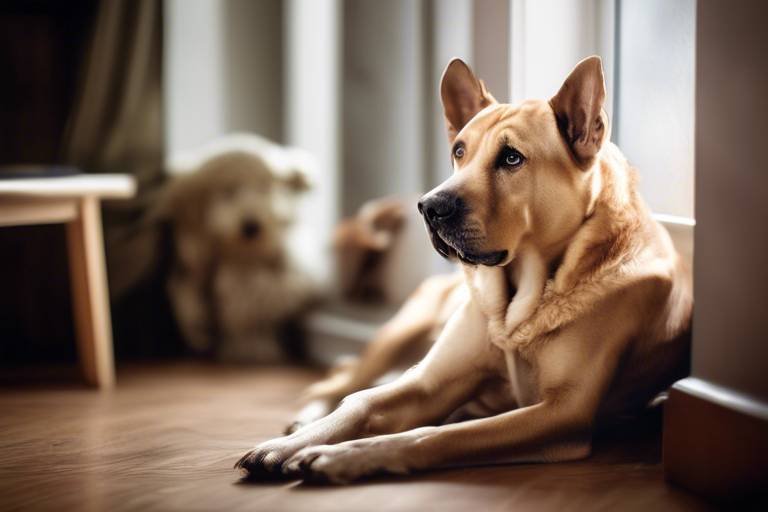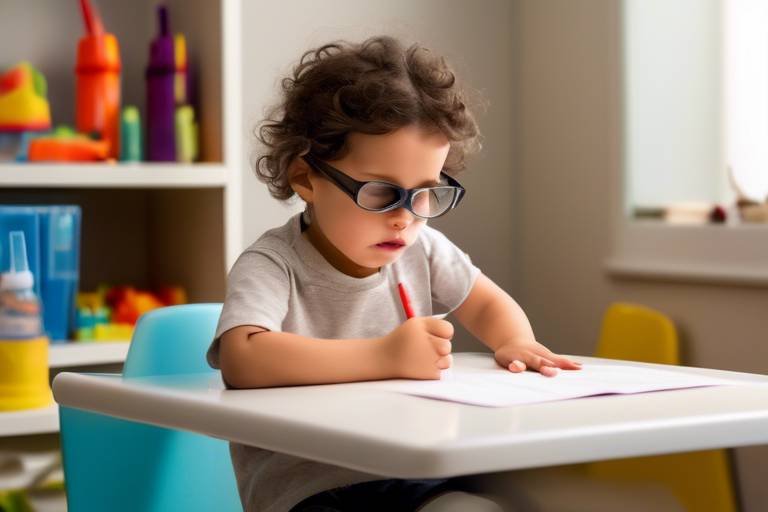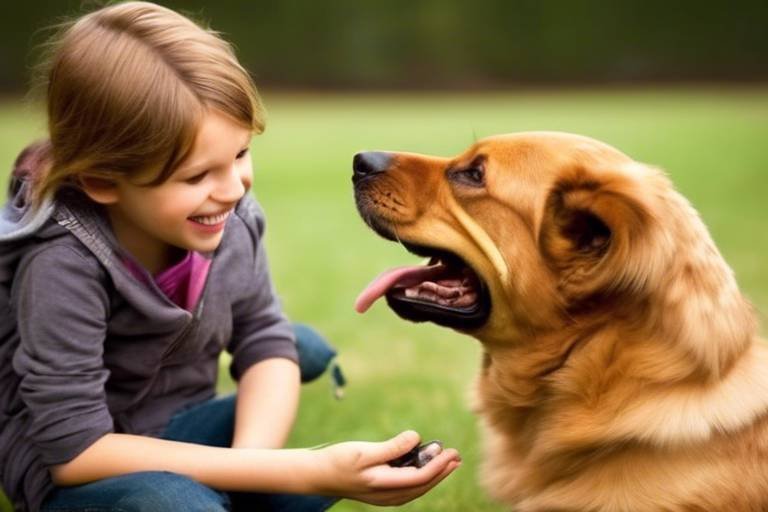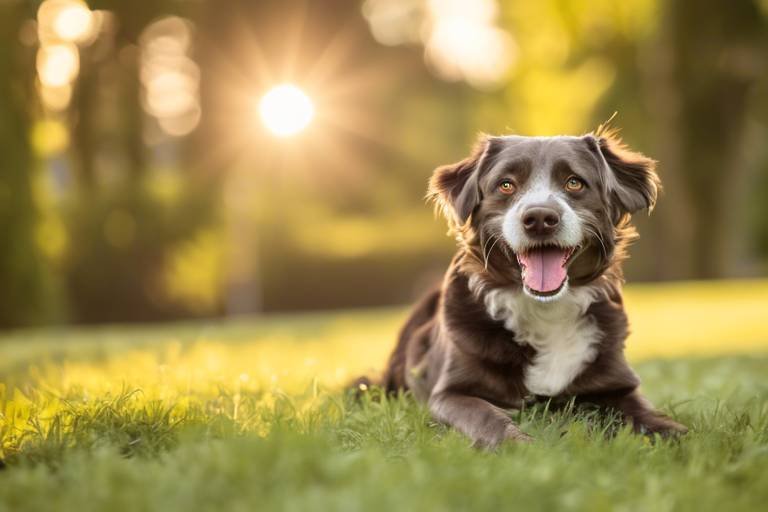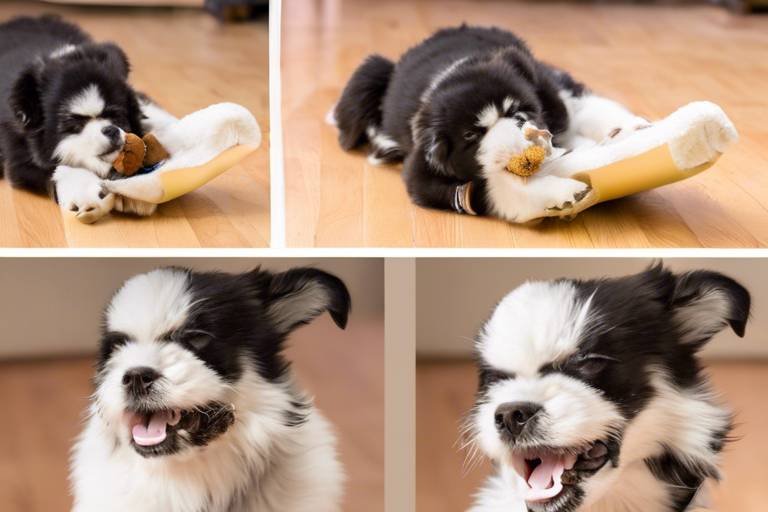How to Help Your Dog Adjust to a New Owner
Bringing home a new dog is like adding a new member to your family; it’s exciting yet can be a bit overwhelming for both you and your furry friend. Just imagine, your new dog is stepping into a world filled with unfamiliar smells, sounds, and faces. This transition can be a rollercoaster of emotions for them. To ensure that your dog feels comfortable and secure in their new surroundings, it’s crucial to implement some effective strategies. In this article, we’ll explore essential tips and techniques that will help your dog adjust smoothly to their new home and owner, paving the way for a happy and healthy relationship moving forward.
Recognizing your dog’s emotional state during this transition is absolutely vital. Dogs are incredibly perceptive creatures, and they can experience a whirlwind of feelings such as anxiety, confusion, or even fear when they find themselves in a new environment. Just like humans, dogs need time to process changes and adapt to their new surroundings. Imagine being in a strange place without any familiar faces; it’s no wonder they might feel a bit lost! Observing their behavior can give you clues about how they’re feeling. Are they hiding? Barking excessively? These signs can help you understand their emotional landscape better.
One of the most effective ways to help your dog adjust is by establishing a designated area that they can call their own. This space should be a sanctuary where your dog feels safe and secure. Think of it as their little fortress amidst the chaos of a new home. It should be comfortable and quiet, providing a retreat for your dog whenever they feel overwhelmed. A safe space can significantly reduce anxiety and promote a sense of stability. It’s like giving them a cozy corner where they can curl up and feel at ease.
Selecting an appropriate spot for your dog's safe space is crucial. Consider factors like noise levels, foot traffic, and access to natural light. A quiet corner away from the hustle and bustle of daily activities can work wonders. Dogs thrive in environments where they can observe their surroundings without feeling threatened. So, pick a location that is not only comfortable but also offers them a sense of control over their space.
Including familiar items such as their bed, toys, and blankets can provide immense comfort. These items carry familiar scents that can help ease anxiety during the adjustment period. Just like how a child finds comfort in their favorite stuffed animal, dogs find solace in their belongings. It’s essential to create an inviting atmosphere that feels like home to them.
Defining boundaries within your home can help your dog understand their new environment. Use baby gates or designated areas to create a sense of security and structure. This not only helps in managing their behavior but also gives them a clear understanding of where they can roam freely. Think of it as setting the rules of the house, which can be incredibly reassuring for your new companion.
Dogs thrive on routine, and establishing a consistent schedule for feeding, walks, and playtime can help your dog feel more secure and settled in their new home. Imagine how comforting it is to know what to expect each day; this is exactly how your dog will feel with a structured routine. A predictable schedule helps reduce anxiety and builds trust, as your dog learns that their needs will be met reliably.
Building a strong bond with your new dog is essential for a successful relationship. Patience and positive interactions can foster trust and affection over time. Just like any relationship, it takes time to develop a deep connection. Engaging in activities that promote bonding, such as training sessions or leisurely walks, can create shared experiences that strengthen your relationship.
Utilizing positive reinforcement methods, such as treats and praise, can encourage desired behaviors. This approach helps your dog associate good experiences with their new owner. Think of it as a way to say, “Hey, you’re doing great!” every time they follow a command or show good behavior. This not only boosts their confidence but also enhances your bond.
Regular playtime is vital for building a connection with your dog. Engaging in fun activities can help alleviate stress and strengthen your bond as they adjust to their new life. Whether it’s a game of fetch, tug-of-war, or simply spending time cuddling, these moments create lasting memories and reinforce your relationship.
- How long does it take for a dog to adjust to a new owner?
Every dog is different, but it can take anywhere from a few days to several weeks for a dog to fully adjust to a new environment.
- What should I do if my dog shows signs of anxiety?
Provide a safe space, maintain a routine, and consider consulting a veterinarian or a professional trainer for additional guidance.
- Can I introduce my new dog to other pets right away?
It's best to introduce them gradually and in a controlled environment to ensure a smooth transition.

Understanding Your Dog's Emotions
This article provides essential tips and strategies for helping your dog transition smoothly to a new home and owner, ensuring a happy and healthy relationship moving forward.
When you bring a new dog into your home, it's vital to understand that they are not just furry companions; they are emotional beings. Just like us, dogs experience a range of feelings, and during a transition to a new owner, they may feel anxiety, confusion, or even fear. Imagine being in a foreign place, surrounded by unfamiliar faces and sounds—this is how your dog might feel. Recognizing these emotions is crucial for fostering a positive relationship.
During the initial days, your dog may exhibit signs of stress, such as excessive barking, hiding, or even destructive behavior. These actions are not just mischief; they are expressions of their emotional state. It's essential to observe your dog's body language closely. For instance, a tucked tail, pinned ears, or avoidance of eye contact can indicate discomfort or fear. Conversely, a wagging tail and relaxed body posture can signal that they are beginning to feel more at ease. Understanding these signals can help you respond appropriately to their needs.
To better understand your dog's emotional state, consider the following common feelings they might experience during this transition:
- Anxiety: This can manifest as pacing, whining, or even refusing to eat. It's their way of expressing that they are overwhelmed.
- Confusion: New environments can be disorienting. Your dog might seem lost or unsure of their surroundings.
- Fear: Sudden noises, unfamiliar scents, or new people can trigger fear responses, leading to hiding or aggressive behavior.
As you navigate this transition, remember that patience is key. Just like humans, dogs need time to adjust and feel comfortable in their new environment. Providing reassurance and understanding can go a long way in helping your dog settle in. Consider spending quiet time together, allowing them to explore their new space at their own pace. The more positive experiences you create, the quicker your dog will learn to trust you and feel at home.
Establishing a designated area for your dog can help them feel secure. This space should be comfortable and quiet, allowing your dog to retreat when feeling overwhelmed.
Selecting an appropriate spot for your dog's safe space is important. Consider factors like noise levels, foot traffic, and access to natural light to create a calming environment.
Including familiar items such as their bed, toys, and blankets can provide comfort. These items carry familiar scents that can help ease anxiety during the adjustment period.
Defining boundaries within your home can help your dog understand their new environment. Use baby gates or designated areas to create a sense of security and structure.
Dogs thrive on routine, and establishing a consistent schedule for feeding, walks, and playtime can help your dog feel more secure and settled in their new home.
Building a strong bond with your new dog is essential for a successful relationship. Patience and positive interactions can foster trust and affection over time.
Utilizing positive reinforcement methods, such as treats and praise, can encourage desired behaviors. This approach helps your dog associate good experiences with their new owner.
Regular playtime is vital for building a connection with your dog. Engaging in fun activities can help alleviate stress and strengthen your bond as they adjust to their new life.
Here are some common questions that new dog owners often have:
- How long does it take for a dog to adjust to a new home? Each dog is different, but it can take anywhere from a few days to several weeks for them to feel comfortable.
- What should I do if my dog shows signs of anxiety? Create a safe space for them, maintain a consistent routine, and consult a veterinarian if necessary.
- Can I help my dog adjust by introducing them to new people and pets? Yes, but do it gradually and ensure that all interactions are positive.

Creating a Safe Space
When welcoming a dog into your home, one of the most important steps you can take is to create a safe space for them. This designated area serves as a sanctuary where your furry friend can retreat whenever they feel overwhelmed or anxious. Just think of it as a cozy corner where they can unwind and feel secure, much like how we all have our favorite spots to relax after a long day. A safe space helps your dog understand that they have a place of their own, which can significantly ease their transition into a new environment.
To set up this comforting area, you should consider a few key factors. First, the location of the safe space is crucial. Ideally, it should be in a quiet part of your home, away from the hustle and bustle of daily activities. Look for a spot with minimal foot traffic and noise, as this will allow your dog to feel at ease. Natural light can also play a role in creating a calming atmosphere, so try to choose a location that benefits from sunlight during the day.
Next, it's time to fill this safe haven with essential comfort items. Incorporating familiar objects can make a world of difference for your dog. Items such as their bed, toys, and blankets should be included, as these carry scents and memories from their previous home. These familiar smells can provide a sense of comfort and security, helping to alleviate anxiety during the adjustment period. Imagine how soothing it is to snuggle up in your favorite blanket after a tough day; your dog feels the same way!
Additionally, consider using a crate as part of their safe space. A crate can serve as a personal den for your dog, offering them a secure enclosure where they can retreat when they need some time alone. Just ensure that the crate is a positive environment by never using it as a form of punishment. Instead, make it a cozy retreat filled with their favorite toys and treats, encouraging them to see it as a safe haven.
Establishing clear boundaries within your home is another crucial aspect of creating a safe space for your dog. This helps them navigate their new environment with confidence. Use baby gates or designate specific areas where your dog is allowed to roam freely. This not only helps them feel secure but also prevents them from becoming overwhelmed by too much open space. Think of it as giving them a map of their new territory; they’ll appreciate knowing where they can go and where they can’t.
In summary, creating a safe space for your dog is about more than just providing a physical area; it’s about fostering a sense of security and belonging. By selecting the right location, filling it with comforting items, and setting clear boundaries, you can help your new furry friend adjust more smoothly to their new home. Remember, patience is key during this transition. Your dog may take some time to feel completely at ease, but with your support, they will soon find their footing.
Q: How long will it take for my dog to adjust to their new safe space?
A: Every dog is different, but typically, it can take anywhere from a few days to a few weeks for them to fully adjust. Be patient and give them time to explore their new surroundings.
Q: What should I do if my dog seems scared of their safe space?
A: If your dog appears fearful, try to make the space more inviting. Use treats, toys, and gentle encouragement to help them associate the area with positive experiences.
Q: Is it okay to leave my dog alone in their safe space?
A: Yes, as long as they feel comfortable and safe. A safe space can provide a great environment for them to relax and unwind, especially when they need some alone time.
Choosing the Right Location
When it comes to helping your dog adjust to a new home, for their safe space is absolutely crucial. Think of it as picking the perfect spot for a cozy hideaway; it should be a place where your furry friend can feel at ease and secure. Start by considering factors like noise levels, foot traffic, and access to natural light. Dogs can be sensitive to their surroundings, and a loud or bustling area might heighten their anxiety, making it harder for them to settle in. Ideally, you want a location that is somewhat isolated from the hustle and bustle of daily household activities.
For instance, a corner of your living room might seem appealing, but if it’s near the front door or the kitchen where everyone gathers, it could be overwhelming for your pup. Instead, think about a quieter room, perhaps a guest bedroom or a designated corner in your own bedroom, where they can retreat when things get a bit too much. This not only gives them a sense of security but also allows them to observe the family dynamics from a safe distance. After all, it’s like having a backstage pass to the show without being in the spotlight!
Moreover, consider the lighting in the area. A space that receives plenty of natural light can help uplift your dog’s mood. Dogs, just like us, can feel more relaxed and happy in bright, sunny spots. However, ensure that the area does not become too hot or uncomfortable during the day. You want your dog to feel like they have their own personal sanctuary—one that is both bright and cozy, much like a sunlit nook in a favorite café.
Another aspect to keep in mind is accessibility. Your dog should be able to easily access their safe space, especially during stressful moments. If they have to navigate through a maze of furniture or other obstacles, it could add to their anxiety. A clear path to their retreat will help them feel more in control and less stressed. Think of it as creating a dog-friendly highway—the easier it is for them to get to their safe spot, the more secure they will feel.
In summary, choosing the right location for your dog’s safe space involves a mix of quietness, light, and accessibility. By taking the time to find the perfect spot, you’re laying the groundwork for a successful adjustment period. Remember, the goal is to create a tranquil environment that feels like home for your furry friend. After all, a happy dog leads to a happy owner!
Essential Comfort Items
This article provides essential tips and strategies for helping your dog transition smoothly to a new home and owner, ensuring a happy and healthy relationship moving forward.
Recognizing the emotional state of your dog during this transition is crucial. Dogs may experience anxiety, confusion, or even fear when moving to a new environment.
Establishing a designated area for your dog can help them feel secure. This space should be comfortable and quiet, allowing your dog to retreat when feeling overwhelmed.
Selecting an appropriate spot for your dog's safe space is important. Consider factors like noise levels, foot traffic, and access to natural light to create a calming environment.
When bringing your dog into a new environment, providing familiar comfort items can make a world of difference. Think of these items as your dog's security blanket. They carry scents and memories that can help alleviate anxiety and provide a sense of belonging. Essential comfort items include:
- Dog Bed: A cozy bed that smells like home can help your dog feel relaxed and safe.
- Toys: Familiar toys can provide entertainment and comfort, serving as a reminder of their previous home.
- Blankets: A soft blanket with their scent can create a perfect little nook for your dog to snuggle into.
In addition to these items, consider incorporating some new toys or a fresh blanket to stimulate your dog's curiosity and encourage exploration of their new surroundings. The key is to create a blend of the old and the new, allowing your dog to feel both comfortable and excited about their new life.
Moreover, don't underestimate the power of your presence. Your dog will often look to you for reassurance. Spend some time sitting quietly in their safe space, allowing them to approach you when they feel ready. This simple act can reinforce their sense of security and help them adjust more smoothly.
Defining boundaries within your home can help your dog understand their new environment. Use baby gates or designated areas to create a sense of security and structure.
Dogs thrive on routine, and establishing a consistent schedule for feeding, walks, and playtime can help your dog feel more secure and settled in their new home.
Building a strong bond with your new dog is essential for a successful relationship. Patience and positive interactions can foster trust and affection over time.
Utilizing positive reinforcement methods, such as treats and praise, can encourage desired behaviors. This approach helps your dog associate good experiences with their new owner.
Regular playtime is vital for building a connection with your dog. Engaging in fun activities can help alleviate stress and strengthen your bond as they adjust to their new life.
Q: How long does it take for a dog to adjust to a new owner?
A: The adjustment period can vary widely from dog to dog. Some may adapt in a few days, while others might take weeks. It's important to be patient and provide a consistent routine.
Q: What should I do if my dog shows signs of anxiety?
A: If your dog shows signs of anxiety, such as excessive barking, hiding, or pacing, try to provide a calm environment, use comfort items, and consult a veterinarian if needed.
Q: Can I introduce my dog to other pets right away?
A: It's best to introduce your new dog to other pets gradually. Start with short meetings in a neutral space to ensure a smooth transition.
Setting Boundaries
This article provides essential tips and strategies for helping your dog transition smoothly to a new home and owner, ensuring a happy and healthy relationship moving forward.
Recognizing the emotional state of your dog during this transition is crucial. Dogs may experience anxiety, confusion, or even fear when moving to a new environment.
Establishing a designated area for your dog can help them feel secure. This space should be comfortable and quiet, allowing your dog to retreat when feeling overwhelmed.
Selecting an appropriate spot for your dog's safe space is important. Consider factors like noise levels, foot traffic, and access to natural light to create a calming environment.
Including familiar items such as their bed, toys, and blankets can provide comfort. These items carry familiar scents that can help ease anxiety during the adjustment period.
Defining boundaries within your home can significantly help your dog understand their new environment. Think of it as setting the stage for a new play; your dog needs to know where they can roam freely and where they should stay out. Use baby gates or designated areas to create a sense of security and structure. This not only keeps your dog safe but also allows them to explore their new surroundings at their own pace.
When establishing boundaries, consider the following:
- Consistency is Key: Make sure that everyone in the household understands the rules. If one person allows the dog on the couch while another doesn’t, it can create confusion for your furry friend.
- Gradual Introduction: Allow your dog to explore different areas of the house gradually. Start with one room and slowly introduce them to others, ensuring they're comfortable in each space.
- Positive Reinforcement: Whenever your dog respects the boundaries you've set, reward them with treats or praise. This reinforces the behavior and helps them understand what is expected.
By setting clear boundaries, you're not just creating a physical space for your dog; you're also establishing a framework for a trusting relationship. Just like in any new friendship, knowing the limits helps both of you feel more secure and confident.
Dogs thrive on routine, and establishing a consistent schedule for feeding, walks, and playtime can help your dog feel more secure and settled in their new home.
Building a strong bond with your new dog is essential for a successful relationship. Patience and positive interactions can foster trust and affection over time.
Utilizing positive reinforcement methods, such as treats and praise, can encourage desired behaviors. This approach helps your dog associate good experiences with their new owner.
Regular playtime is vital for building a connection with your dog. Engaging in fun activities can help alleviate stress and strengthen your bond as they adjust to their new life.
| Question | Answer |
|---|---|
| How long does it take for a dog to adjust to a new owner? | It can vary, but most dogs take a few weeks to several months to fully adjust. Patience and consistency are key. |
| What are the signs that my dog is feeling anxious? | Signs of anxiety can include excessive barking, hiding, pacing, or changes in eating habits. Pay attention to these behaviors. |
| Should I allow my dog on the furniture? | It depends on your personal preference and the boundaries you set. Just be consistent with your rules. |
Establishing a Routine
When it comes to helping your dog settle into their new home, establishing a routine is one of the most effective strategies you can adopt. Dogs are creatures of habit, and they thrive on predictability. By creating a consistent schedule for feeding, walks, and playtime, you not only provide your furry friend with a sense of security but also help them understand what to expect from their day-to-day life. Think of it like setting the stage for a play; when the scenes are predictable, the actor knows their lines and feels more comfortable performing.
Start by determining a feeding schedule that works for both you and your dog. For instance, if you decide to feed them twice a day, stick to those times. This helps your dog know when to anticipate their meals, reducing anxiety and promoting a healthy appetite. Similarly, regular walks are crucial. Not only do they provide physical exercise, but they also offer mental stimulation and the opportunity for your dog to explore their new environment. Aim for a set time each day; this can be a morning stroll or an evening adventure. Your dog will begin to associate these times with excitement and activity, reinforcing their new routine.
In addition to feeding and walks, don't forget to schedule playtime! Engaging in fun activities together is a great way to bond and can help alleviate any stress your dog may feel during this transition. You might want to set aside specific times for interactive play, such as fetch or tug-of-war, ensuring that these moments become a cherished part of your daily routine. Just like how we look forward to our favorite TV show, your dog will start to get excited about their playtime, making it a highlight of their day.
To help you visualize how to structure your dog's daily routine, here’s a simple example:
| Time | Activity |
|---|---|
| 7:00 AM | Morning Walk |
| 8:00 AM | Breakfast |
| 10:00 AM | Playtime |
| 12:00 PM | Afternoon Walk |
| 6:00 PM | Dinner |
| 8:00 PM | Evening Playtime |
By maintaining this routine, you’ll not only help your dog feel more settled, but you’ll also be laying the groundwork for a trusting relationship. Dogs are incredibly perceptive; they notice when things change. So, if you can keep their daily activities consistent, it will ease their adjustment period significantly. Remember, patience is key! Just like learning a new dance, it takes time to get the steps right, but with practice, you and your dog will find your rhythm together.
- How long does it take for a dog to adjust to a new routine? Every dog is different, but typically, it can take anywhere from a few days to a few weeks for a dog to fully adjust to a new routine.
- What if my dog doesn't seem to like the routine? If your dog appears resistant, try adjusting the schedule slightly. Some dogs may need more time to adapt or may prefer different activities at different times.
- Can I change the routine later on? Absolutely! As your dog becomes more comfortable, you can gradually introduce changes to their routine, but do so slowly to avoid overwhelming them.
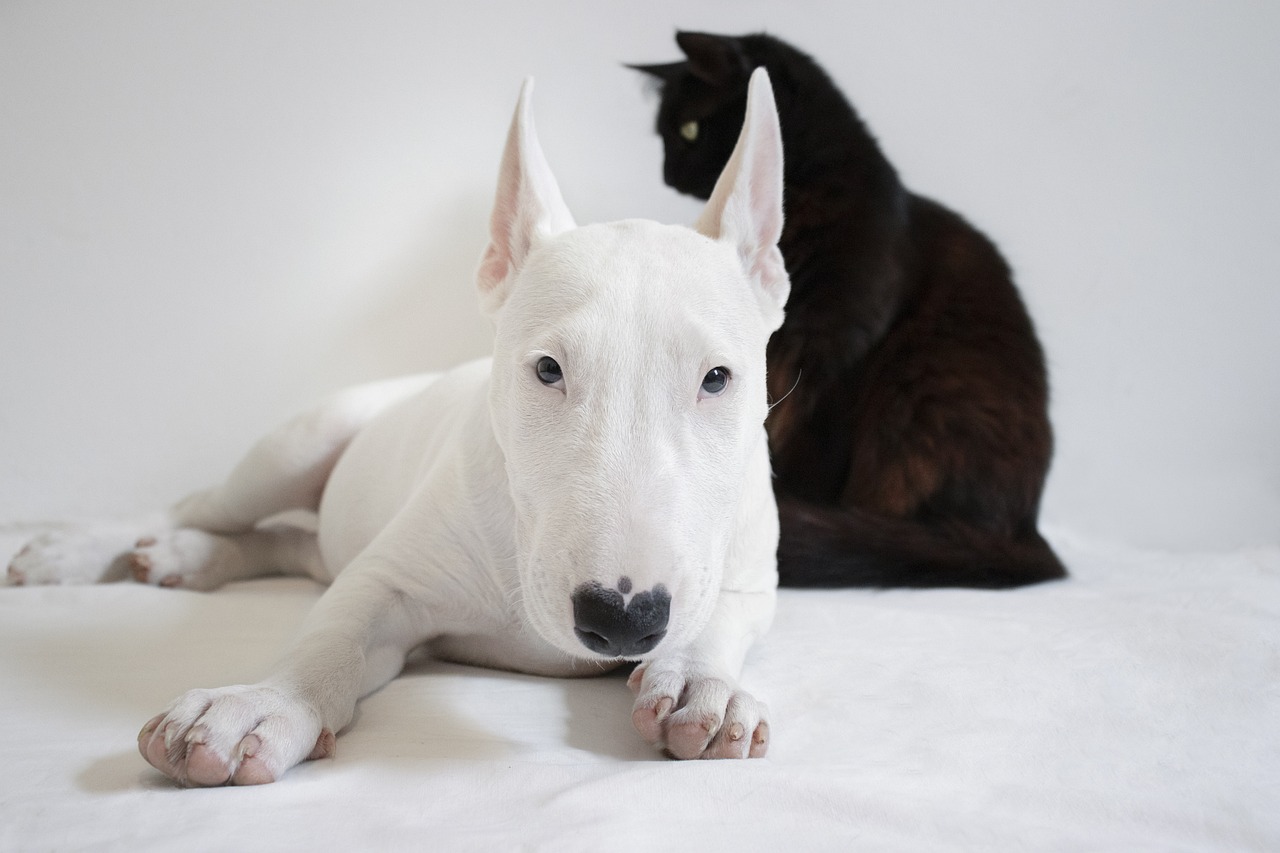
Building Trust and Bonding
This article provides essential tips and strategies for helping your dog transition smoothly to a new home and owner, ensuring a happy and healthy relationship moving forward.
Recognizing the emotional state of your dog during this transition is crucial. Dogs may experience anxiety, confusion, or even fear when moving to a new environment.
Establishing a designated area for your dog can help them feel secure. This space should be comfortable and quiet, allowing your dog to retreat when feeling overwhelmed.
Selecting an appropriate spot for your dog's safe space is important. Consider factors like noise levels, foot traffic, and access to natural light to create a calming environment.
Including familiar items such as their bed, toys, and blankets can provide comfort. These items carry familiar scents that can help ease anxiety during the adjustment period.
Defining boundaries within your home can help your dog understand their new environment. Use baby gates or designated areas to create a sense of security and structure.
Dogs thrive on routine, and establishing a consistent schedule for feeding, walks, and playtime can help your dog feel more secure and settled in their new home.
Building a strong bond with your new dog is essential for a successful relationship. Patience and positive interactions can foster trust and affection over time. Just like humans, dogs need time to adjust to new faces and environments. Imagine moving to a new city; you wouldn’t immediately feel at home, right? Your dog is experiencing a similar shift, and it’s your job to be their anchor.
One effective way to establish trust is through positive reinforcement techniques. Utilizing treats and praise can encourage desired behaviors and help your dog associate you with good experiences. For instance, when your dog sits on command, reward them with a treat and lots of enthusiastic praise. This not only reinforces the behavior but also builds a positive connection between you two.
Engaging in playtime is another vital aspect of building a connection. Dogs are naturally playful creatures, and regular play sessions can help alleviate stress and strengthen your bond as they adjust to their new life. Consider activities like fetch, tug-of-war, or even a simple game of chase in your backyard. These moments of joy not only provide exercise but also create memories that deepen your relationship.
Additionally, it’s important to understand your dog’s body language. Dogs communicate their feelings through their posture, tail position, and facial expressions. By learning to read these signals, you can respond appropriately to their needs, further enhancing the bond you share. For example, if your dog approaches you with a wagging tail and relaxed ears, they’re likely feeling comfortable and happy. Conversely, if they cower or tuck their tail, it’s a sign they may need some space or reassurance.
In summary, building trust and bonding with your new dog is a journey that requires time, understanding, and consistent effort. Remember, every positive interaction counts. As you navigate this new chapter together, you’ll find that the love and loyalty of your furry friend will be well worth the patience you invest.
- How long does it take for a dog to adjust to a new owner? - The adjustment period can vary from a few days to several weeks, depending on the dog's personality and past experiences.
- What should I do if my dog is fearful in the new environment? - Be patient and create a safe space for them. Gradually introduce them to new areas of your home.
- Can I use negative reinforcement to train my dog? - It's generally more effective to use positive reinforcement, as it encourages good behavior without causing fear or anxiety.
- How often should I play with my new dog? - Aim for at least 30 minutes of playtime each day, but adjust based on your dog's energy level and needs.
Positive Reinforcement Techniques
When it comes to helping your dog adjust to a new owner, can be your best friend. Imagine this: your dog is like a sponge, soaking up experiences and emotions. By focusing on rewarding good behavior rather than punishing the bad, you create an environment where your furry friend feels safe and loved. This approach not only helps your dog learn what you expect from them but also builds a strong bond between the two of you. After all, who doesn't want to be the favorite human in their dog's life?
One effective method of positive reinforcement is using treats and praise. For instance, each time your dog follows a command, whether it's sitting, staying, or even just coming when called, reward them with a small treat and a hearty "Good boy!" or "Good girl!" This combination of verbal praise and tasty rewards makes your dog associate obeying commands with positive outcomes. It's like giving them a high-five every time they do something right!
Another important aspect to consider is the timing of your rewards. Be sure to give treats or praise immediately after your dog performs the desired behavior. This way, they can connect the dots between their action and the reward. Think of it as a cause and effect; your dog will quickly learn that good things happen when they listen to you. You might even want to keep a small pouch of treats handy during training sessions so you can reward them on the spot.
But wait, there's more! Engaging in interactive playtime can also serve as a form of positive reinforcement. Dogs love to play, and incorporating games into your training can make learning feel less like work and more like fun. For example, if your dog fetches the ball and brings it back, not only do you reward them with a treat, but you also throw the ball again for another round of play. This creates a cycle of positive experiences, reinforcing the idea that following your cues leads to exciting and enjoyable interactions.
Additionally, consistency is key when using positive reinforcement techniques. Just like humans, dogs thrive on routine and predictability. Make sure everyone in your household is on the same page regarding training commands and rewards. This way, your dog won’t get confused about what behaviors are acceptable and which ones are not. Consistent commands and rewards help solidify their understanding and strengthen the bond you share.
In summary, positive reinforcement techniques are a powerful way to help your dog adjust to their new home and owner. By using treats, praise, and engaging play, you create a loving environment that encourages your dog to learn and grow. Remember, patience and consistency are your best allies in this journey, so keep it fun and rewarding!
- How long does it take for a dog to adjust to a new owner?
Every dog is different, but typically, it can take anywhere from a few days to several weeks for a dog to fully adjust to a new owner and environment. - What are some signs that my dog is stressed in a new environment?
Look for signs like excessive barking, hiding, pacing, or changes in eating habits. These can indicate that your dog is feeling anxious. - Can I use negative reinforcement to train my dog?
While some trainers use negative reinforcement, it is generally less effective and can harm the bond between you and your dog. Positive reinforcement is recommended as it fosters trust and encourages learning.
Engaging in Playtime
This article provides essential tips and strategies for helping your dog transition smoothly to a new home and owner, ensuring a happy and healthy relationship moving forward.
Recognizing the emotional state of your dog during this transition is crucial. Dogs may experience anxiety, confusion, or even fear when moving to a new environment.
Establishing a designated area for your dog can help them feel secure. This space should be comfortable and quiet, allowing your dog to retreat when feeling overwhelmed.
Selecting an appropriate spot for your dog's safe space is important. Consider factors like noise levels, foot traffic, and access to natural light to create a calming environment.
Including familiar items such as their bed, toys, and blankets can provide comfort. These items carry familiar scents that can help ease anxiety during the adjustment period.
Defining boundaries within your home can help your dog understand their new environment. Use baby gates or designated areas to create a sense of security and structure.
Dogs thrive on routine, and establishing a consistent schedule for feeding, walks, and playtime can help your dog feel more secure and settled in their new home.
Building a strong bond with your new dog is essential for a successful relationship. Patience and positive interactions can foster trust and affection over time.
Utilizing positive reinforcement methods, such as treats and praise, can encourage desired behaviors. This approach helps your dog associate good experiences with their new owner.
Engaging in playtime is not just about having fun; it's a vital component in building a lasting bond with your dog. Think of playtime as the glue that holds your relationship together. When you toss a ball or tug on a rope, you're not just playing; you're communicating! Dogs are incredibly social creatures, and playtime offers them a chance to express their natural instincts while also learning to trust you. Imagine the joy on your dog's face when they chase after a ball or successfully catch a frisbee; that excitement is contagious!
Moreover, playtime can serve as a fantastic stress reliever for both you and your new furry friend. Just like humans, dogs can feel overwhelmed, especially when transitioning to a new environment. Engaging in fun activities can alleviate this stress, making your dog feel more at home. Consider mixing it up with different types of games:
- Fetch: A classic game that encourages exercise and mental stimulation.
- Tug-of-war: Great for building strength and engaging your dog's competitive spirit.
- Hide and seek: A fun way to enhance your dog's problem-solving skills.
As you engage in these activities, remember that consistency is key. Regular playtime not only strengthens your bond but also helps your dog establish a sense of routine in their new life. Try to set aside specific times each day for play; this way, your dog will come to expect these joyful moments. And don't forget, it's not just about the games; your attitude matters! Keep things light and fun, and your dog will pick up on your positive energy.
Q1: How long does it take for a dog to adjust to a new owner?
A1: The adjustment period can vary from dog to dog. Some may take a few days, while others might take weeks or even months. Patience is key!
Q2: What if my dog seems fearful during the transition?
A2: It's normal for dogs to feel scared or anxious in a new environment. Creating a safe space and engaging in playtime can help ease their fears.
Q3: How often should I play with my dog?
A3: Aim for at least 30 minutes of playtime each day, but feel free to adjust based on your dog's energy levels and needs.
Frequently Asked Questions
- How can I tell if my dog is feeling anxious in a new home?
Dogs may show signs of anxiety through behaviors like excessive barking, pacing, hiding, or even destructive actions. If your dog seems restless or tries to escape their safe space, it’s a clear sign they’re feeling overwhelmed.
- What should I include in my dog's safe space?
Creating a cozy safe space for your dog is essential. Include their favorite bed, some toys, and a blanket that smells like their old home. This familiarity can help ease their anxiety and make them feel more secure.
- How long does it usually take for a dog to adjust to a new owner?
The adjustment period can vary widely among dogs. Some may take just a few days, while others might need several weeks or even months to feel completely comfortable. Patience is key!
- What kind of routine should I establish for my new dog?
Establish a consistent routine that includes regular feeding times, daily walks, and play sessions. Dogs thrive on predictability, and a solid routine can help them feel more secure in their new environment.
- How can I build trust with my new dog?
Building trust takes time, but you can start by using positive reinforcement techniques. Reward good behavior with treats and praise, and spend quality time playing together to strengthen your bond.
- Is it important to set boundaries for my dog?
Absolutely! Setting boundaries helps your dog understand their new environment and what is expected of them. Use baby gates or designated areas to create a sense of security and structure.
- What types of play are best for bonding with my dog?
Engaging in interactive games like fetch, tug-of-war, or hide-and-seek can be fantastic for bonding. These activities not only provide exercise but also create positive experiences that strengthen your relationship.


